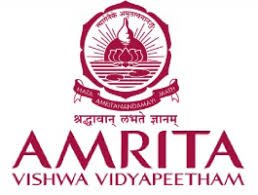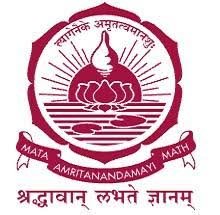Admission to the BS-MS (Bachelor of Science-Master of Science) program in Mathematics typically involves a competitive application process. Interested students must apply to the university or college offering the program. Admission requirements vary between institutions but generally
Admission Process for BS-MS in Mathematics Course
The BS-MS program in Earth and Environmental Sciences is an integrated five-year course designed to provide students with a strong foundation in the natural sciences, particularly focusing on earth and environmental sciences. This program prepares students for careers in fields such as environmental management, geology, climate science, and more. The admission process for BS-MS in Earth and Environmental Sciences can be competitive, and it involves several key steps.
1. Research and Program Selection: Before initiating the admission process, prospective students should thoroughly research institutions that offer BS-MS programs in Earth and Environmental Sciences. Consider factors such as the program's reputation, faculty expertise, available research facilities, and career opportunities. It's important to identify universities that align with your academic and career goals.
2. Meeting Eligibility Criteria: Each institution may have specific eligibility criteria for admission to its BS-MS program in Earth and Environmental Sciences. While these criteria can vary, they often include the following.
i) Educational Qualifications: Applicants should have completed their 10+2 or equivalent education with a strong foundation in science subjects, including physics, chemistry, biology, and mathematics. A background in geography or environmental science may be advantageous.
ii) Minimum Grade Point Average (GPA): Many programs require applicants to have a minimum GPA or equivalent academic performance in their previous studies.
iii) Standardized Test Scores: Some universities may require applicants to submit standardized test scores, such as the SAT or ACT, to assess their aptitude for science and mathematics.
iv) Entrance Examinations: Certain institutions conduct their own entrance examinations to evaluate applicants' knowledge of science subjects. These exams are designed to assess applicants' aptitude and potential.
3. Application Preparation: To create a strong application, applicants should gather the necessary documents and prepare their materials carefully.
i) Application Form: Complete the application form provided by the university or institution offering the BS-MS program in Earth and Environmental Sciences. Ensure that you provide accurate and complete information.
ii) Transcripts: Submit transcripts of your high school or 10+2 education. These transcripts should demonstrate your academic achievements, particularly in science subjects.
iii) Letters of Recommendation (LORs): Many programs require applicants to submit LORs from teachers or professors who can vouch for their academic abilities and potential in the field of earth and environmental sciences.
iv) Statement of Purpose (SOP): Write a well-crafted SOP that outlines your motivation for pursuing a BS-MS in Earth and Environmental Sciences, your academic interests, and your career goals. Explain why you are interested in the specific program and institution.
v) Resume or Curriculum Vitae (CV): Include a detailed CV that highlights your educational background, extracurricular activities, science-related projects, and any relevant achievements or awards.
4. Application Submission: Once all the necessary documents are prepared, submit your application to the university or institution. Pay close attention to application deadlines and follow any specific instructions provided by the institution.
5. Application Fee: Many institutions charge an application fee to process applications. Applicants should inquire about this fee and make the required payment, ensuring that the application is complete.
6. Admission Review: Admissions committees review applications holistically, considering various factors such as academic qualifications, letters of recommendation, SOP, standardized test scores (if required), and alignment with the program's objectives. They assess whether applicants have the potential to excel in the field of earth and environmental sciences.
7. Entrance Examinations (if applicable): In some cases, institutions may conduct entrance examinations as part of the admission process. These exams are designed to evaluate applicants' knowledge of science subjects, including physics, chemistry, biology, and mathematics. Applicants should prepare diligently if such examinations are required.
8. Admission Decision: After reviewing all applications, the admissions committee will notify applicants of their admission status. Typically, notifications are sent via email or through the institution's application portal. If accepted, applicants will receive formal admission letters outlining the next steps, including enrollment procedures and deadlines.
9. Financial Considerations: Prospective students should consider the financial aspects of their BS-MS education, including tuition fees, living expenses, and potential sources of funding. Many universities offer scholarships, financial aid, or assistantship positions that can help support students during their studies.
10. Enrollment and Orientation: Upon acceptance, students must complete enrollment and registration procedures as outlined by the institution. This includes submitting any required financial documents, confirming their intent to enroll, and selecting courses for the BS-MS in Earth and Environmental Sciences program. Participation in orientation sessions is crucial to become acquainted with the institution, its faculty, and program expectations.
11. Commencement of BS-MS Studies: The BS-MS program in Earth and Environmental Sciences typically includes a combination of foundational science courses, specialized courses in earth and environmental sciences, fieldwork, laboratory research, and opportunities for internships or practical experience. Students are encouraged to engage in hands-on learning and research throughout their academic journey.
12. Program Completion: Upon successfully meeting all program requirements, including coursework, research projects, and any internship or practical components, students complete their BS-MS in Earth and Environmental Sciences. Graduates are well-equipped with a strong scientific foundation and are prepared for diverse career options, including environmental consulting, research, conservation, and more.
 5 Years
5 Years
 Post Graduate
Post Graduate
 Science
Science
 Full Time
Full Time









 back
back

